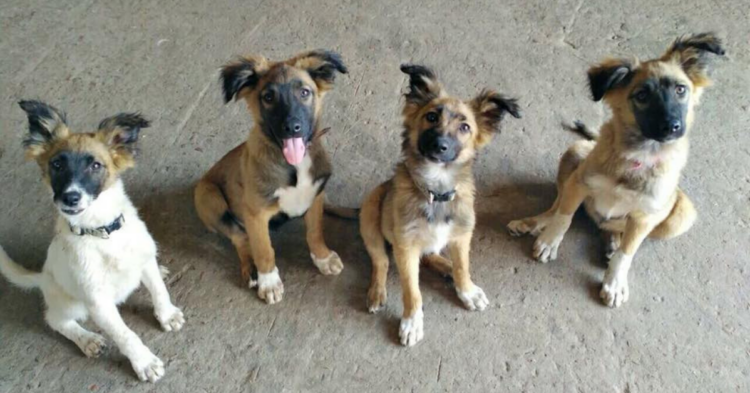Thank goodness for good people doing good things to help those in need. And especially those helping dogs. It’s always heartening to see people step up for the innocents, and I’m not sure there’s anything more innocent and pure than a good pooch.
We’ve seen some incredible efforts to help out pets after things like hurricanes and floods, but what about an ongoing calamity like Chernobyl? It turns out that yes, someone’s trying to help Chernobyl’s dogs out, too.
One of the things that makes Chernobyl such a compelling disaster is that it was the first of its kind.

Soviet authorities were dealing with a disaster the likes of which the world had never experienced before. Yes, Three Mile Island had an accident in 1979, but that partial meltdown was nothing like Chernobyl — which by no means excuses the many, many ways the Soviets bungled their response.
The aftermath of that 1986 tragedy has been brought back into the public’s view thanks to HBO’s hit miniseries.
One of the series’ most disturbing events comes in the fourth episode of the series.

It shows one of the smaller, little-known tragedies of the whole Chernobyl calamity, in which soldiers are tasked with heading back into the contaminated city of Pripyat to kill all the dogs left behind by the evacuees, hoping to prevent them from spreading the contamination.
It turns out the real-life mission to eliminate all those dogs was not a success, because there are still dogs in and around the exclusion zone — and there’s another real-life mission to help them.
Meet the Clean Futures Fund, a U.S.-based humanitarian aid organization dedicated to supporting communities affected by industrial accidents.

And, in partnership with SPCA International, for the last four years, a team from the Clean Futures Fund has traveled to Ukraine and made it their mission to rescue and find homes for as many of the dogs and puppies as they can. But, as they explain, it’s a big, big problem.
The dogs left behind by the evacuees were pets, but more than thirty years has passed since then, and by necessity they’ve grown more wild.

The dogs there now are descendants of animals that had to wander a wasteland, beset by wolves and suffering radiation sickness. These dogs often don’t live long — a five-year-old Chernobyl dog is considered old, and most are under three. They’ve had to do some serious things to survive, likely including inter-breeding with some of those wolves.
They need a lot of care if they’re ever going to be fully domesticated again, and the locals aren’t in the best position to provide that care.
Around the nuclear plant itself, there’s a population of about 250 dogs.

The CFF estimates there are another 225 strays around Pripyat and hundreds of others scattered around the exclusion zone. Visitors are warned not to try to pet them. It’s a troubling situation — treating all those dogs for rabies, spaying and neutering them, and finding them homes just isn’t something the local authorities can afford, so out of desperation, they hired a worker to catch and kill the dogs.
So far, that worker has refused to do so. Many of the nuclear plant workers will feed and bring strays in when they can, but it’s not a long-term solution.
In the meantime, the dogs are going to keep having more puppies.

That’s just nature, right? But the CFF is doing its part to help control that population, On their visits, they’ve set up veterinary care stations and rounded up Chernobyl’s puppies. The pups are put in quarantine, treated for rabies and radiation poisoning, then spayed and neutered.
Once cleared, the puppies are brought to the U.S. to find forever homes.
Obviously, these dogs are going to need a lot of love and patience.

“The biggest consideration should be given to the fact that these dogs have not had any real socialization before coming to our rescue shelter,” CFF co-founder Lucas Hixson told Vice. “They don’t understand the concept of a toy—the only things they like to play with are sticks and things to eat.
“We have developed a special training program for the puppies while they are in the adoption shelter, but they will likely still need a little extra love to reach their full potential.”
In 2018, the CFF managed to rescue 40 puppies from Chernobyl and get them adopted.

And they’re hoping for even more success in 2019, especially given how HBO’s show has rekindled an interest in the area and is attracting considerably more tourism to the area.
With the current mission underway, it’s not clear exactly when the newest rescues will be available for adoption, so keep an eye out for more news from the CFF to see if one of these good fallout boys can come home with you.
The CFF also has a GoFundMe set up to raise funds for all the various supplies needed for their missions to Chernobyl.
h/t Vice , Clean Futures Fund
















































